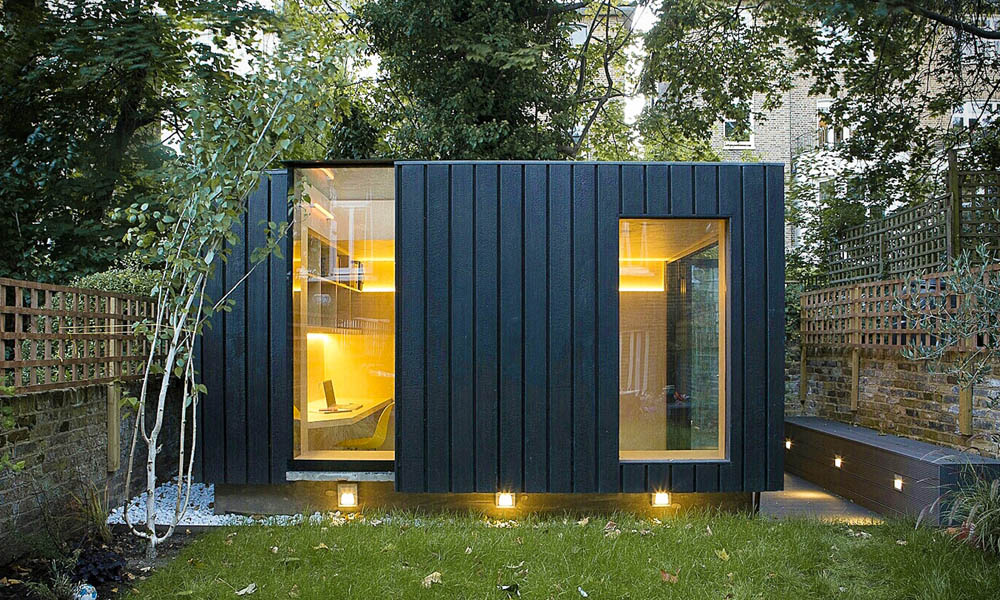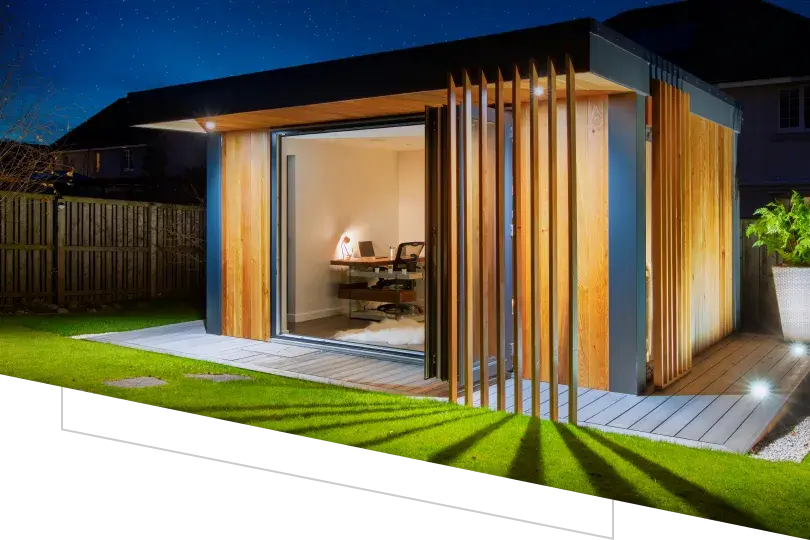Free Tips For Planning Permission For Garden Summer Houses
What Are The Dimensions Restrictions For Garden Rooms?Certain size limitations will typically determine whether planning permission is required for extensions to garden rooms, extension and conservatories that are outhouses. Here's a brief overview of commonly used size-related requirements you have to take into consideration when seeking planning permission.
If you're planning to build a detached house it is necessary to be granted permission if your planned construction, as well as any outbuildings that are already in place exceed 50 percent of the total surface of the land around the original home.
Height Restrictions
Single-story structures The maximum eaves height must not exceed 2.5 meters, and the total height must not exceed 4 meters in the case of a dual-pitched roof or 3 meters for other type of roof.
A building that is less than 2 meters from the property boundary must not exceed 2.5 meters in the height.
Floor Area:
The building code might be required for structures that are larger than 30 square meters, even though planning permission isn’t required.
Distance from borders:
If the structure is located within 2 meters of a line, planning permission is often needed if the building's height is more than 2.5 meters.
Building Usage
The intended use of the space, although not necessarily a limitation in terms of size, may affect whether or not planning permission is needed. If the building's intended use is residential, or a commercial space, planning approval is more likely to be required.
Permitted Development Rights:
Permitted Development Rights (which allows certain kinds of works to be completed without the need for full application for planning) have specific limits on size and conditions. These rights differ based on the location of the property an area of conservation or is subject to other restrictions.
Conservatories or Extensions
For rear extensions with a single story, the maximum depth of the extension is typically 4 meters for detached homes and 3 metres for terraced or semidetached homes. The depth can be increased to 8 meters for detached homes and by 6 feet for semi-detached or terraced homes, depending on the specifics.
The ceiling of a single-story rear extension should not exceed 4 meters.
Side Extenders
The maximum height of a side extension must not exceed 4 meters.
Volume Restrictions
Planning permission may be required in specific areas, such as conservation zones or Areas of Outstanding Natural Beauty. Any additional building that expands the size of the original house by greater than 10% (or 50 cubic meters) or the larger of the two figures (whichever is greater) is subject to approval from the planning department.
Front Extensions
Planning permission is usually required for extensions that extend beyond the property's original frontage that faces the road.
Check with your local authority as the rules may vary in accordance with local councils as well as property conditions. Even the planning permission doesn't have to be sought, building regulations approval might still be necessary to ensure structural integrity and safety reasons. See the recommended do garden rooms add value for more examples including garden rooms, garden room permitted development, garden room planning permission, garden room conservatory, how to get power to a garden room, small garden office, garden outhouse, garden rooms, what is a garden room, garden room permitted development and more.

What Type Of Permits Are Needed To Construct Garden Structures And Gardens?
Planning permissions can be affected by the environmental impacts of conservatories, garden rooms and outhouses. Be aware of these environmental issues:
If the proposed structure is likely to impact wildlife habitats in the area, for example local trees, hedgerows and ponds then you will need permission to plan the project. In order to minimize and assess the impact the environmental impact, an eco-survey could be necessary.
Habitats and Species that are protected
If the location is home to protected species (e.g. bats, bats, newts, etc.)) or is within or close to protected habitats (e.g., Sites of Special Scientific Interest : SSSI) the planning permission is vital. It is crucial to adopt special measures to protect these species.
Tree Preservation Orders
Planning permission is required when the proposed structure requires removal of trees, or the alteration of trees that are covered by TPOs. Local councils will be able to assess the impacts, and could demand that replacement plants be made or other mitigation.
Flood Risk and Water Management:
Planning permission is needed for any development that is located near waters bodies or areas that are prone to flooding. If the building is going to be built, a flood risk assessment (FRA), which includes drainage solutions as well as an assessment of whether the building will increase flooding risk or not is required to be carried out.
Sustainable Construction Practices:
Sometimes, planning permission is required to allow the use and adoption of sustainable building materials and methods. This is a way of assessing energy efficiency and insulation as well as the carbon footprint of building materials.
Surface Runoff and Drainage
Environmental considerations involve the impact of a new building on surface water runoff and drainage. Planning permission ensures proper drainage systems to avoid flooding and waterlogging are in place.
Soil and stability of the land:
Planning permission will be required if construction is likely to alter soil quality or stability. This includes potential issues like soil erosion or subsidence, especially on sloped sites.
Air Quality
Planning permission is required to build development near major highways or industrial zones that can impact the local air quality. This will ensure that the levels of air pollution stay within acceptable limits. Also, mitigation measures will be implemented.
Noise Pollution:
If the use that is planned for the extension or garden space is likely to generate substantial noise (e.g., a workshop or music studio) Planning permission is required. The local authority will review the noise level and any potential impact on neighbors and the environment.
Waste Management:
Effective waste management, both during and post-construction, is essential. Planning permission ensures that there are provisions for recycling and waste disposal that minimize environmental impact.
Energy Efficiency
A plan permit could have energy efficiency requirements, such as the use solar panels, high-performance glass or other green technology. This helps reduce the environmental footprint.
Environmental Regulations
Environmental regulations such as the UK Environmental Protection Act must be followed by all developments. Planning approval ensures that all requirements are met in addition to the development being environmentally sustainable.
Permissions to design conservatories or garden rooms and outhouses, office buildings, and garden offices must consider the environmental impact of the project. Early consultation with the local authority is vital in understanding the needs of the project and making sure that it is compliant with the applicable regulations and is ecologically responsible. Take a look at the top rated garden office black for website info including garden rooms near me, small garden office, garden room heater, garden rooms in St Albans, garden out house, garden rooms, composite summer house, out house, garden rooms, composite garden office and more.

What Planning Permissions Are Needed For Gardens, Rooms, Etc. In Terms Of Utilities And Infrastructure
If you are planning to construct conservatories, garden rooms, outhouses, garden offices, or extensions, utilities and infrastructure aspects are important and could influence the need for planning permission. Be aware of these crucial factors Drainage and water supply
If the new structure needs to be connected to drainage or water supply systems, a planning approval could be required. Local water authorities may be required to consider the impact of any new structure on the water and sewage systems in the area.
Electricity and Gas Connections
Planning permission may be required when the building is to be connected to electricity or gas. The compliance with building regulations as well as safety standards is vital for these connections.
Utility Easements
If the proposed structure is located in utility easements (areas designated for infrastructure and utility lines) Planning permission could be required. Construction in these areas may require approval from the local utility provider.
Septic tanks and Sewage Systems
If the new structure will require a septic system, or an on-site treatment system for wastewater, planning permission is required. These systems must comply with environmental and health regulations.
Drainage and Surface Water Management:
Planning permission may be required in order to manage the drainage issue and surface water runoff of the proposed structure. In order to stop flooding, erosion, and water pollution may need to be put in place.
Access to Utilities for Construction
If the construction process requires temporary access to utilities (such as water to be used for construction purposes) the planning permit may be necessary. Connections that are temporary are subject to environmental and safety laws.
The impact on local infrastructure
A planning permission is needed to determine the impact of new structures on local infrastructure, including utilities, roads and public services. Local authorities will determine the infrastructure that is in place and whether it is able to support the development.
Waste Management and recycling:
The planning permission could include requirements for waste management throughout construction and afterward recycling. To minimize the environmental impact, it is crucial to have sufficient provisions for recycling and waste management.
Energy Efficiency and Renewable Energy:
The installation of energy-efficient equipment or renewable energy systems such as solar panels and heat pumps, in new buildings might require approval from the planning department. The building code and environmental regulations must be adhered to.
Telecommunications as well as Internet Connectivity
Planning permission might be needed in the event that the proposed structure likely to require internet or connection to telecommunications. Conformity with the regulations and standards for the telecommunications infrastructure is vital.
Access to the Road and Footpath:
For instance, it could be required to obtain planning permission before you can construct or alter a footpath. For the construction of roads and pathways it is essential to adhere to safety guidelines.
Accessibility to Public Transport:
A planning permit may be needed if the new construction affects transportation facilities for public use like bus stops and train stations. The public transport infrastructure should be in compliance with all applicable regulations and standards.
In the end utilities, infrastructure and other elements are crucial in determining whether you need planning permission to build garden rooms, conservatories, or outhouses. Check with the local authority for planning as early as possible in the planning phase to ensure that the building is in compliance with applicable guidelines and standards. View the best modern garden company for more tips including garden room vs extension, ground screws vs concrete, best heater for log cabin, herts garden rooms, gym outhouse, small garden office, what size garden room without planning permission, 4m x 4m garden room, garden room vs extension, gym outhouse and more.
